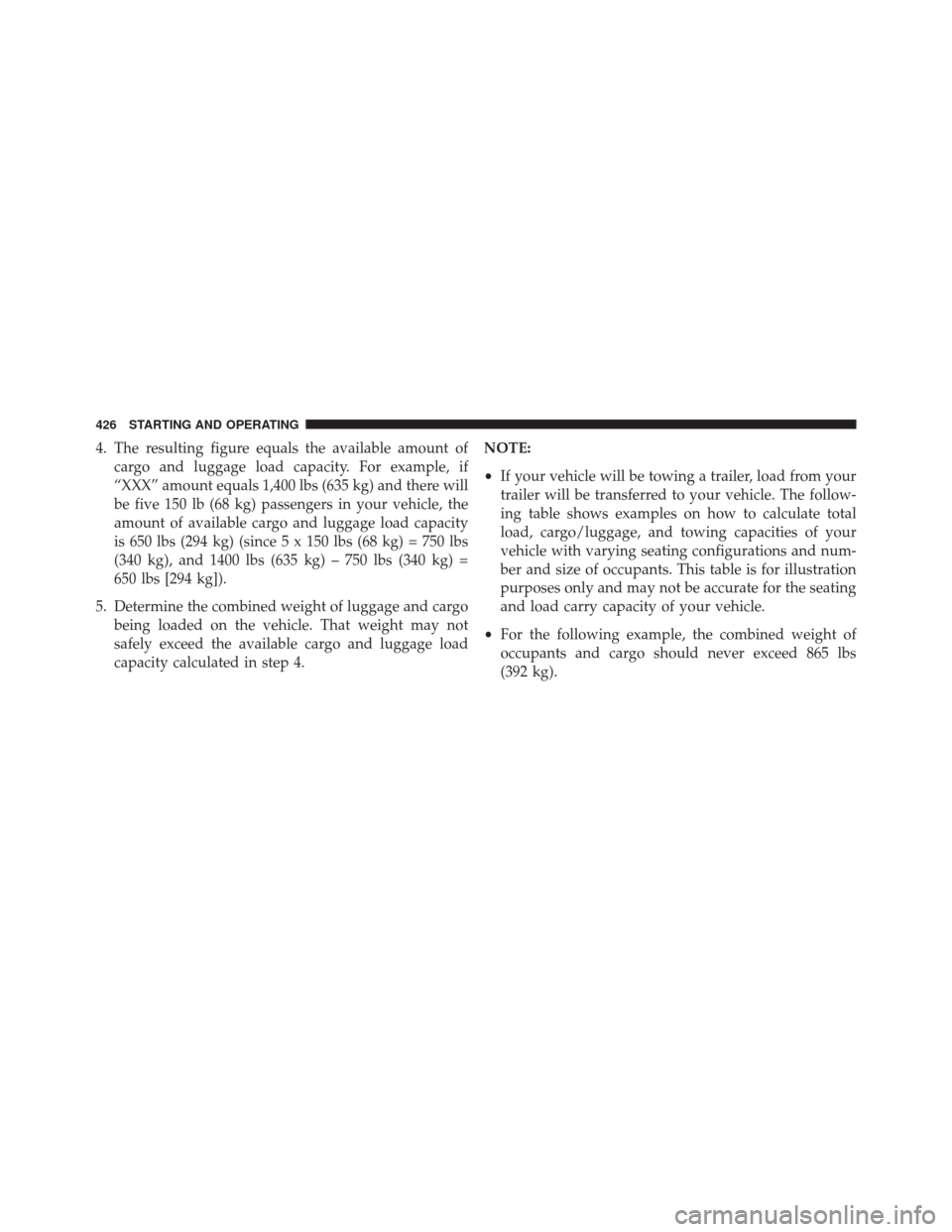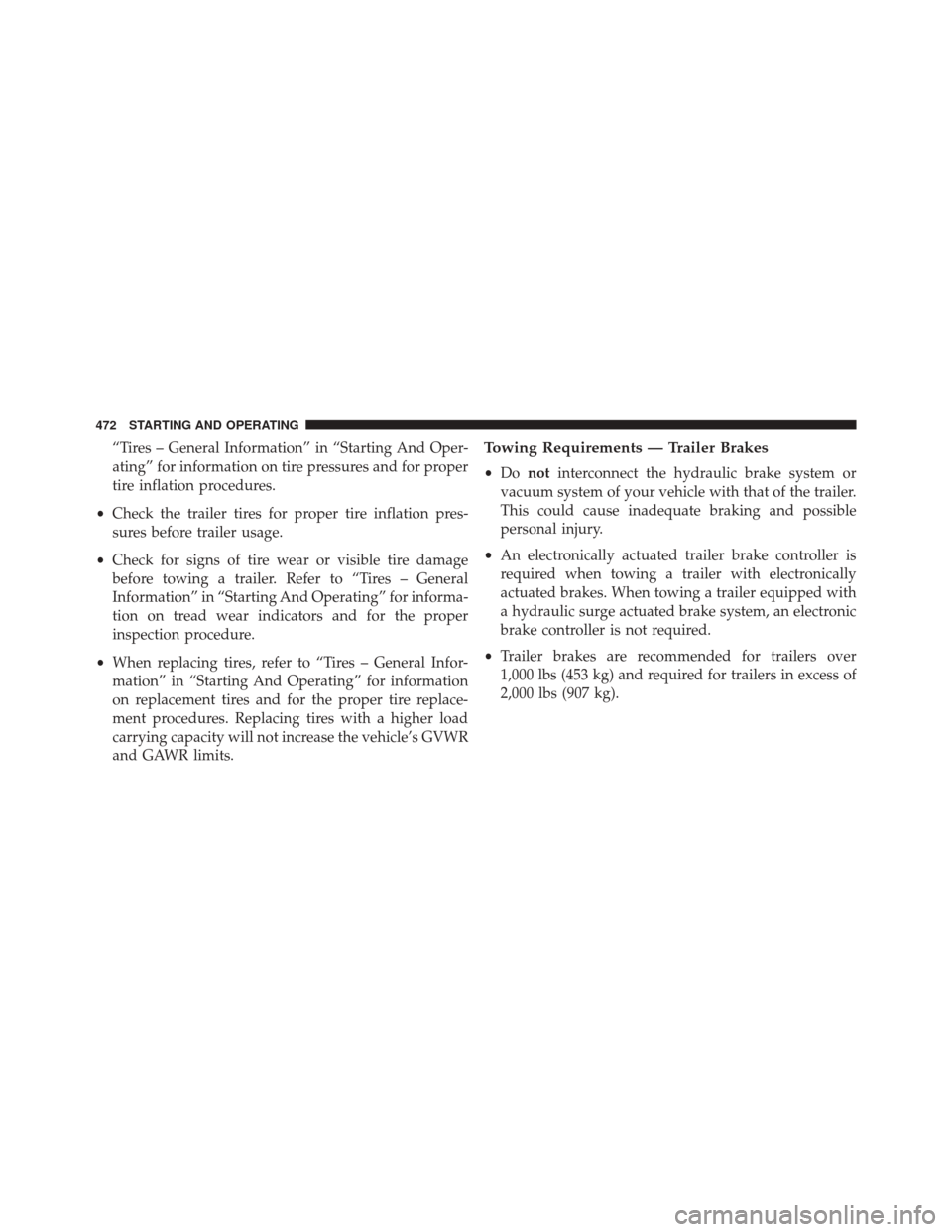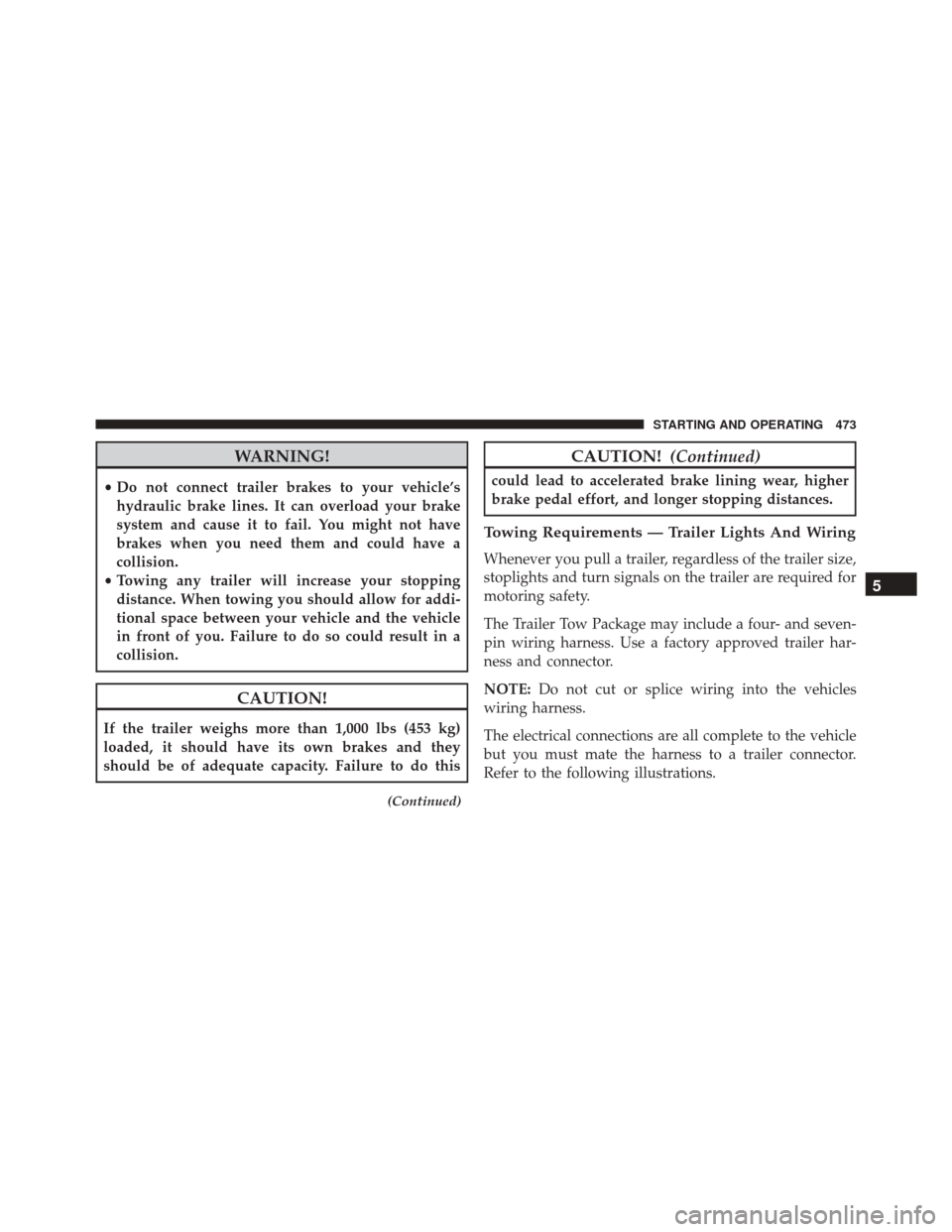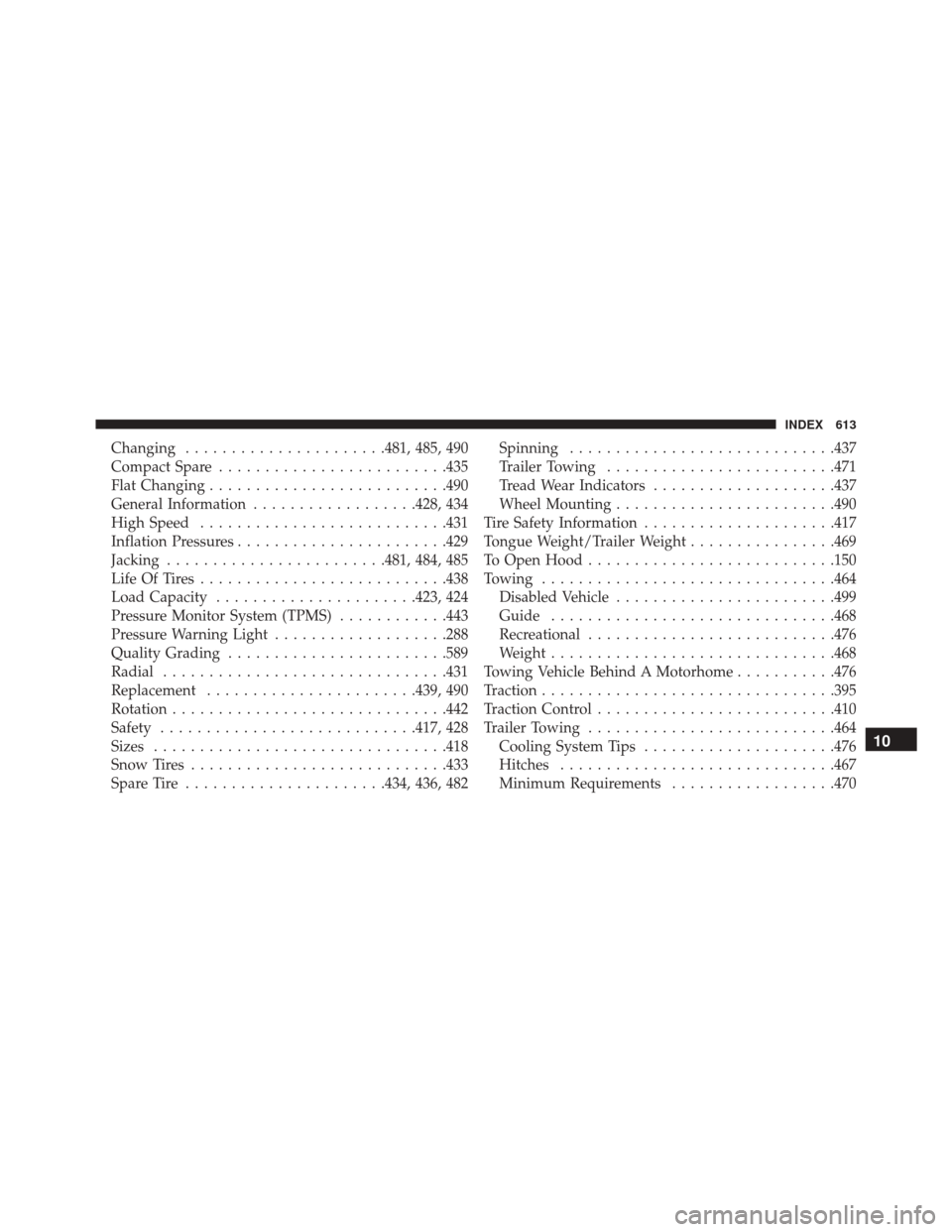Page 428 of 620

4. The resulting figure equals the available amount ofcargo and luggage load capacity. For example, if
“XXX” amount equals 1,400 lbs (635 kg) and there will
be five 150 lb (68 kg) passengers in your vehicle, the
amount of available cargo and luggage load capacity
is 650 lbs (294 kg) (since 5 x 150 lbs (68 kg) = 750 lbs
(340 kg), and 1400 lbs (635 kg) – 750 lbs (340 kg) =
650 lbs [294 kg]).
5. Determine the combined weight of luggage and cargo being loaded on the vehicle. That weight may not
safely exceed the available cargo and luggage load
capacity calculated in step 4. NOTE:
•
If your vehicle will be towing a trailer, load from your
trailer will be transferred to your vehicle. The follow-
ing table shows examples on how to calculate total
load, cargo/luggage, and towing capacities of your
vehicle with varying seating configurations and num-
ber and size of occupants. This table is for illustration
purposes only and may not be accurate for the seating
and load carry capacity of your vehicle.
• For the following example, the combined weight of
occupants and cargo should never exceed 865 lbs
(392 kg).
426 STARTING AND OPERATING
Page 474 of 620

“Tires – General Information” in “Starting And Oper-
ating” for information on tire pressures and for proper
tire inflation procedures.
• Check the trailer tires for proper tire inflation pres-
sures before trailer usage.
• Check for signs of tire wear or visible tire damage
before towing a trailer. Refer to “Tires – General
Information” in “Starting And Operating” for informa-
tion on tread wear indicators and for the proper
inspection procedure.
• When replacing tires, refer to “Tires – General Infor-
mation” in “Starting And Operating” for information
on replacement tires and for the proper tire replace-
ment procedures. Replacing tires with a higher load
carrying capacity will not increase the vehicle’s GVWR
and GAWR limits.Towing Requirements — Trailer Brakes
• Do not interconnect the hydraulic brake system or
vacuum system of your vehicle with that of the trailer.
This could cause inadequate braking and possible
personal injury.
• An electronically actuated trailer brake controller is
required when towing a trailer with electronically
actuated brakes. When towing a trailer equipped with
a hydraulic surge actuated brake system, an electronic
brake controller is not required.
• Trailer brakes are recommended for trailers over
1,000 lbs (453 kg) and required for trailers in excess of
2,000 lbs (907 kg).
472 STARTING AND OPERATING
Page 475 of 620

WARNING!
•Do not connect trailer brakes to your vehicle’s
hydraulic brake lines. It can overload your brake
system and cause it to fail. You might not have
brakes when you need them and could have a
collision.
• Towing any trailer will increase your stopping
distance. When towing you should allow for addi-
tional space between your vehicle and the vehicle
in front of you. Failure to do so could result in a
collision.
CAUTION!
If the trailer weighs more than 1,000 lbs (453 kg)
loaded, it should have its own brakes and they
should be of adequate capacity. Failure to do this
(Continued)
CAUTION! (Continued)
could lead to accelerated brake lining wear, higher
brake pedal effort, and longer stopping distances.
Towing Requirements — Trailer Lights And Wiring
Whenever you pull a trailer, regardless of the trailer size,
stoplights and turn signals on the trailer are required for
motoring safety.
The Trailer Tow Package may include a four- and seven-
pin wiring harness. Use a factory approved trailer har-
ness and connector.
NOTE:Do not cut or splice wiring into the vehicles
wiring harness.
The electrical connections are all complete to the vehicle
but you must mate the harness to a trailer connector.
Refer to the following illustrations.
5
STARTING AND OPERATING 473
Page 615 of 620

Changing..................... .481, 485, 490
Compact Spare ........................ .435
Flat Changing ......................... .490
General Information ..................428, 434
High Speed .......................... .431
Inflation Pressures ...................... .429
Jacking ....................... .481, 484, 485
Life Of Tires .......................... .438
Load Capacity ..................... .423, 424
Pressure Monitor System (TPMS) ............443
Pressure Warning Light ...................288
Quality Grading ....................... .589
Radial .............................. .431
Replacement ...................... .439, 490
Rotation ............................. .442
Safety ........................... .417, 428
Sizes ............................... .418
Snow Tires ........................... .433
Spare Tire ..................... .434, 436, 482Spinning
............................ .437
Trailer Towing ........................ .471
Tread Wear Indicators ....................437
Wheel Mounting ....................... .490
Tire Safety Information .....................417
Tongue Weight/Trailer Weight ................469
To Open Hood .......................... .150
Towing ............................... .464
Disabled Vehicle ....................... .499
Guide .............................. .468
Recreational .......................... .476
Weight .............................. .468
Towing Vehicle Behind A Motorhome ...........476
Traction ............................... .395
Traction Control ......................... .410
T
railer Towing .......................... .464
Cooling System Tips .....................476
Hitches ............................. .467
Minimum Requirements ..................470
10
INDEX 613